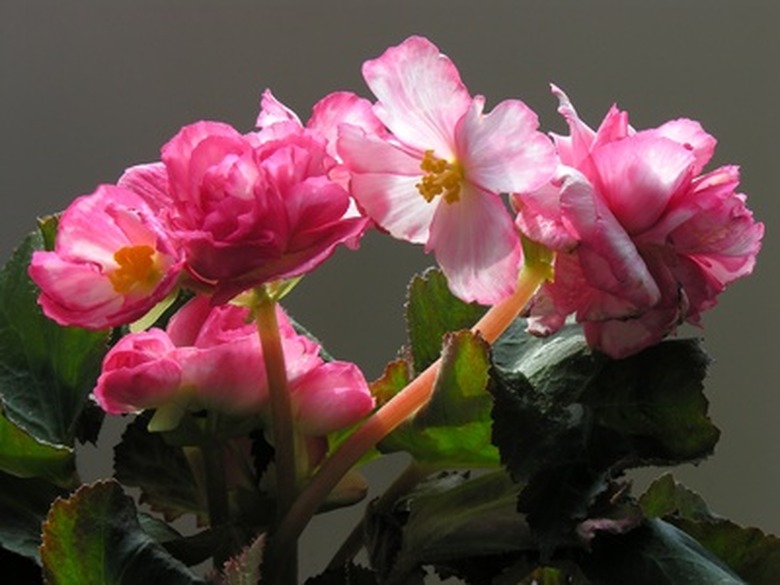How To Care For Rhizomatous Begonias
Things Needed
- Shallow container
- Soil
- 10-10-10 fertilizer
- Granular systemic insecticide
- Fluorescent lights
Rhizomatous begonias are perhaps the hardiest of all the begonias available and derive their name from being grown from rhizomes, unlike any other variety of begonia. The plant makes an ideal ground cover since it creeps along the ground and does not get as tall as other varieties. Rhizomatous begonias are known for their hairy leaves, which can be different from plant to plant–some large and round, others variegated and even star-shaped. When looking for an easy-to-grow plant, this begonia is a good choice.
Step 1
Grow your plant in containers that can be moved indoors during the winter months. Use plastic or clay shallow containers because rhizomatous begonias have shallow root systems and grow in well-draining potting soil. Root rot occurs easily if the soil is soggy.
- Rhizomatous begonias are perhaps the hardiest of all the begonias available and derive their name from being grown from rhizomes, unlike any other variety of begonia.
Step 2
Place the containers in a shady area and keep out of full sun, which can damage the foliage. The color of the leaves will change depending on the light conditions. Too much sun can turn leaves black. If the leaves of your begonia are not the same as when you planted it, change the light conditions by moving the container to a shadier location.
Step 3
Keep your begonia watered consistently and deeply every three to four days, or more as needed. Allow the top 1/2 to 3/4 inch of the soil to dry out before watering again. Check for the dryness by inserting your finger down into the soil up to your first knuckle; if it's dry, water the plant.
- Place the containers in a shady area and keep out of full sun, which can damage the foliage.
- If the leaves of your begonia are not the same as when you planted it, change the light conditions by moving the container to a shadier location.
Step 4
Feed your begonia with a balanced fertilizer, 10-10-10, during the growing season, which is late spring through early summer. Rhizomatous begonias are heavy spring bloomers and need a good food to help produce abundant flowers and foliage. Use only one-quarter strength of the fertilizer each week, beginning in late spring and continuing until the plant finishes blooming.
Step 5
Remove old and dead leaves in the early spring to tidy the plant up. To remove leaves, simply break the leaf off the rhizome so no stem is left on. After blooming is done, prune back the plant that has grown over the edge of the container by snipping off the branches. If desired, the branches can be planted back in the same container or a new container where the branch will quickly take root and form another plant.
- Feed your begonia with a balanced fertilizer, 10-10-10, during the growing season, which is late spring through early summer.
- After blooming is done, prune back the plant that has grown over the edge of the container by snipping off the branches.
Step 6
Check your begonia for pests on a regular basis. The most common pests are mealy bugs and aphids, which attach themselves to the hairy leaves and leave white, cotton-looking spittle on the underside and holes in the leaves. Leaves that fall off or dying rhizomes are indicators of pest infestation. Use a granular systemic insecticide, which will be absorbed through the rhizomes or root system of the plant and make its way into the leaves and foliage.
Step 7
Move your begonia indoors before the first frost and place it under fluorescent lights. Some begonias can survive outside in areas with mild winters where it does not get below freezing. If your plant begins losing foliage, this may be a sign that it is sensitive to the cold and should be brought in until midspring when all chance of frost is gone.
- Check your begonia for pests on a regular basis.
- If your plant begins losing foliage, this may be a sign that it is sensitive to the cold and should be brought in until midspring when all chance of frost is gone.
Tip
Getting water on the leaves of the rhizomatous begonia will not hurt it.
